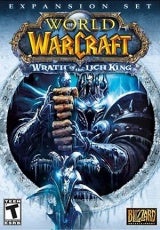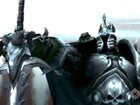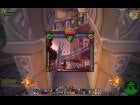In 2004, World of Warcraft effortlessly recast the MMO genre as something that "normal" people all around the world would want to play. What it did was radical: It unpacked the fussy mechanics that relegated the genre to the domain of the expert-obsessive and created an audience for every online RPG that followed. But what was once forward-looking is now starting to seem a bit long in the tooth. WoW has supplanted EverQuest as the blueprint for MMO developers to embellish. These days, MMOs that don't allow you to quest your way to the level cap (as opposed to straight-up grind) are the exception. For the most part, MMOs now earn their distinctions in the small ways in which they differ from WoW.
So it's really no surprise that Wrath of the Lich King tweaks WoW's fundamentals in only the most subtle ways. Wholesale change just isn't Blizzard's style, at least not when it applies to an expansion pack for what may be the largest game in town. Apparently, this worked well enough for people to buy into it, mostly sight-unseen -- 2.8 million copies on launch day, to be specific. Blizzard has dropped a recession-proof bomb on Azeroth, and evidently, we're all fully into it.
Perhaps it was a return to roots that helped prompt the gangbusters early adoption. Where the Burning Crusade went Jack Kirby-cosmic with WoW's fantasy, Wrath brings it home a bit by riffing on Norse mythology -- as interpreted by Norwegian black metal. The continent of Northrend, where level 68 characters and higher play, at times embodies the grim, earnest fantasy evoked by the music of Burzum, or novelist R.A. Salvatore's Icewind Dale Trilogy. This arctic severity, though, is tempered by Blizzard's trademark imaginative whimsy. You know exactly what you're getting in the Howling Fjord, one of the two entry-level zones -- namely, a race of bloodthirsty Nordic giants named Vrykul, and the stark, oppressive landscape they inhabit. But you'll be surprised when you step into Sholazar Basin to find that it's an homage to vanilla WoW jungle zone Un'Goro Crater, fecund and lush, made possible in Northrend's tundra by ancient magic, full of diverse wildlife on which to quest upon. When there's an obvious need for a break from the morose, there's nothing that Titan magic can't solve.
It's surprising to see how all these disparate landscapes can cohere into something resembling an enormous theme park with a definite sense of place. A wacked-out zone like Zul'Drak, home to Northrend's ice trolls and built around Mesoamerican-style beast temples (think: a persistent Zul'Gurub mixed with Eastern Plaguelands) feeds coherently into Dragonblight, a place that's essentially a zone-wide graveyard littered with enormous dragon fossils. The only element connecting them is a titanic staircase leading to the undead-infested troll capital. In all, it's remarkable that this doesn't feel in any way as jarring as it sounds.





 Outstanding!
Outstanding!


